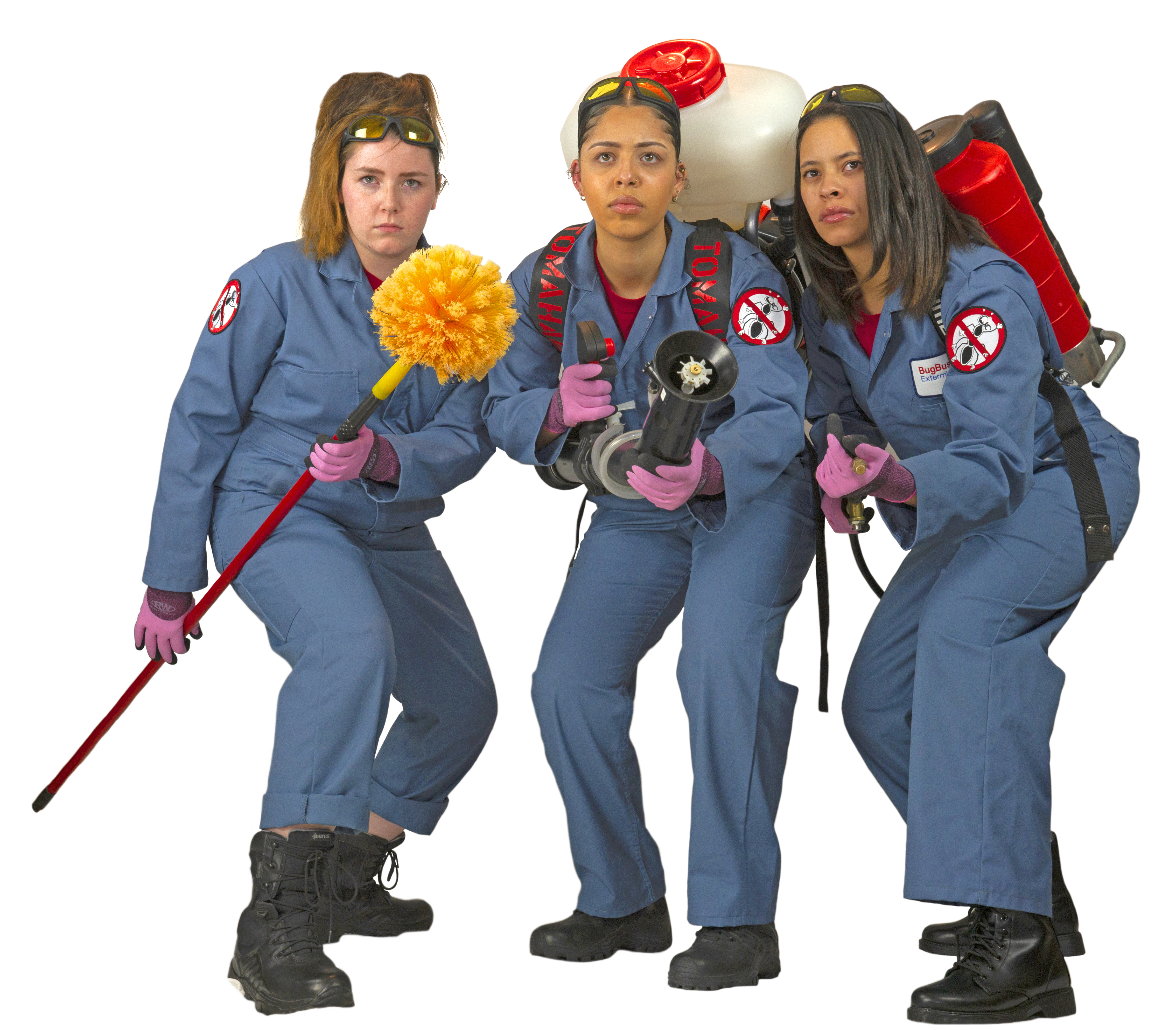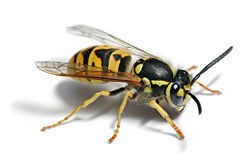
Serving Southwest Ohio and Northern Kentucky

info@TheBugBusters.net.
Attention Realtors and Loan Officers: Click the link for our online inspection sheet.
About Yellow Jackets
Yellowjackets
Yellowjackets are most active from August through October. This is when they increase in numbers and scavenge for human food: They feast on carbonated beverages, cider, juices, ripe fruits and vegetables, candy, ice cream, fish, ham, hamburgers, hot dogs, etc. They will crash your picnics, cookouts, outside restaurants, bakeries, campsites, fairs, sporting events, and any other outdoor event You will also find them around garbage cans and other trash receptacles. Others fly in and out of nests around homes, buildings, and areas where people live, work and play. Yellowjackets are considered beneficial to agriculture since they feed on harmful flies and caterpillars, but they are very aggressive, and their stings are painful. Just like with the sting from all other wasps or bees some people can be allergic to the venom they inject. Fortunately, the Stinging workers do not survive the winter and the same nest is not reused.
A typical yellowjacket worker is about 1/2-inch long, short, and blocky, with alternating black and yellow bands on the abdomen while the queen is larger, about 3/4-inch long. Workers are sometimes confused with honeybees, especially when flying in and out of their nests. Yellowjackets, in contrast to honeybees, are not covered with tan-brown dense hair on their bodies and lack the flattened hairy hind legs used to carry pollen. Yellowjackets have a slender stinger without barbs and can sting repeatedly whereas honeybees have a barbed stinger and sting only once. Some have yellow on the face. Nests are built in trees, shrubs or in protected places such as inside attics, hollow walls, or flooring, in sheds, under porches and eaves of houses, or in soil cavities, animal burrows, etc. Nests are made from wood fiber chewed into a paper-like pulp.
If you see more than a few yellowjackets or suspect for whatever reason they may be in your immediate area, we advise that you be careful not to cut weeds or run the lawnmower over a ground nest nor disturb a nest in a tree or eaves of the home.
Any noise or disturbance can provoke them to attack. Restrain children from throwing rocks or spraying water on nests. Pick fruits as soon as they ripen. Pick up and dispose of any fallen fruit rotting on the ground.
When eating outdoors, keep food covered until eaten, especially ripe fruit and soft drinks. Any scent of food caused by outdoor cooking, eating, feeding pets or garbage cans will attract bees and wasps (especially yellowjackets in late summer and early autumn). Place trash in tightly sealed containers with tight-fitting trash can lids. Cleaning of dumpsters and garbage containers daily may be required at certain times of the year. (Good sanitation is most important.)
Individuals should avoid attracting insects by not wearing perfume, hair spray, hair tonic, suntan lotion, aftershave lotions, heavy-scented soaps, shampoos, and other cosmetics when visiting areas where bees and wasps are present. Avoid shiny buckles, earrings and jewelry, bright, colored, flowery prints (especially bright yellow, light blue, orange, fluorescent red), black, wool, and loose-fitting clothing that may trap stinging insects.
It is strongly suggested that you do not attempt to eliminate Yellowjackets yourself. They are extremely aggressive and can pose great danger.

Adult Yellowjacket
Dayton, OH 45401-3151
Phone 937-256-6475
info@TheBugBusters.net
Powered by w3.css